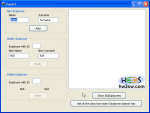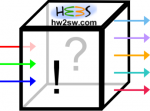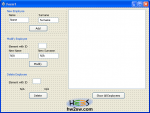
Last time we saw an introduction of what the OOP entails, with a quick look at its four main principles (encapsulation, abstraction, inheritance, polymorphism) and talking about the default mode to instantiate (create) an object from a class, designed or not by us, with the constructor.
So much concepts at once, indeed; and from now on we'll trying to make order in our heads.
By writing the TEmployee constructors we applied the polymorphism: because of the hierarchical system, every class in FreePascal automatically derives at least from the most abstract class, TObject, taking its default members like the constructor itself.
We don't want to exclude its usage from a TEmployee's object, so that we overload it with two new constructors: by overloading we simply make them the new default ones, but keeping the possibility to recall the TObject's one when required.
he instantiation occupies memory, and even if closing an application that memory is freed, nonetheless it's better to provide a method who does this efficiently.
Again, a default method is present and automatically inherited: it's so called destructor!
Here a difference with the constructors: the destructor is unique!
The one in TObject is defined as virtual: this modifier implies that every inheriting class should redefine a new destructor.


